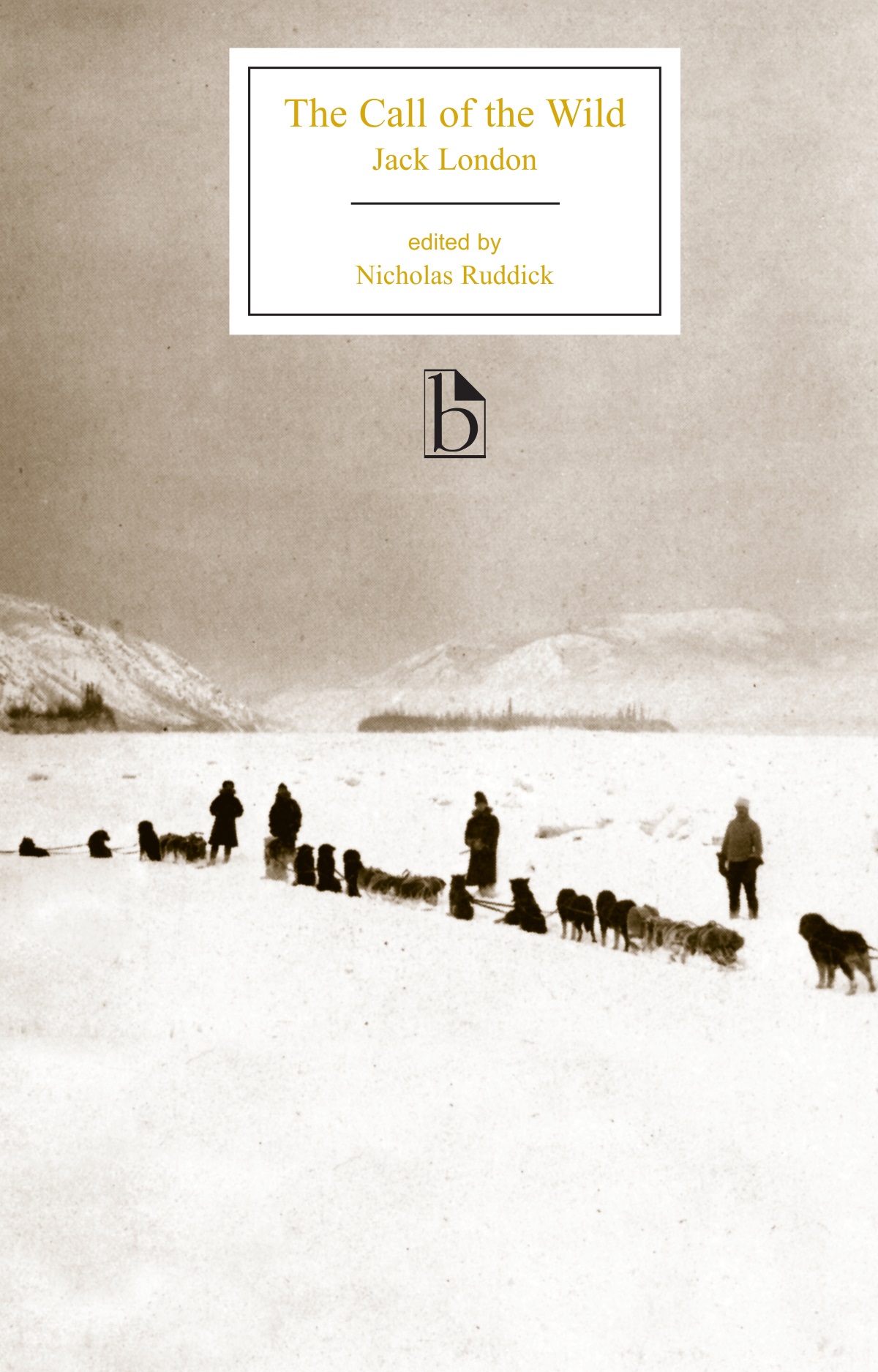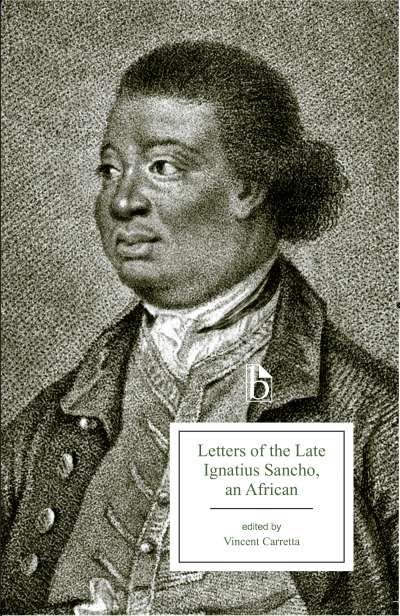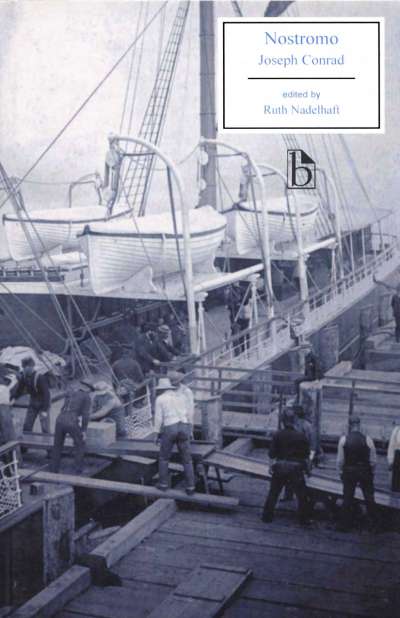
A best-seller from its first publication in 1903, The Call of the Wild tells the story of Buck, a big mongrel dog who is shipped from his comfortable life in California to Alaska, where he must adapt to the harsh life of a sled dog during the Klondike Gold Rush. The narrative recounts Buck’s brutal obedience training, his struggle to meet the demands of human masters, and his rise to the position of lead sled dog as a result of his superior physical and mental qualities. Finally, Buck is free to respond to the “call” of the wilderness. Over a hundred years after its publication, Jack London’s “dog story” retains the enduring appeal of a classic.
This Broadview Edition includes a critical introduction that explores London’s life and legacy and the complex scientific and psychological ideas drawn upon by London in writing the story. The appendices include material on the Klondike, Darwin’s writings on dogs, other contemporary writings on instinct and atavism, and maps of the regions in which the story takes place.
Comments
“This is the best scholarly edition of The Call of the Wild currently available, with a superb, wide-ranging introduction by Nicholas Ruddick that is a model of judicious lucidity. The edition is also greatly enhanced by a series of fascinating primary documents situating the novella in an array of turn-of-the-twentieth-century cultural contexts, including the Klondike gold rush, Darwin on dogs and men, theories of atavism and instinct, and controversies surrounding charges of plagiarism against Jack London. Highly recommended.” — Jonathan Auerbach, University of Maryland
Acknowledgements
References and Abbreviations
Illustrations
Introduction
Jack London: A Brief Chronology
A Note on the Text
The Call of the Wild
Appendix A: The Klondike in Reality and Myth
- From Tappan Adney, The Klondike Stampede (1900)
- From A.C. Harris, Alaska and the Klondike Gold Fields (1897)
Appendix B: The Animal Story
- From Charles G.D. Roberts, The Kindred of the Wild:
A Book of Animal Life (1902)
Appendix C: Darwin on Dogs and Men
- From Charles Darwin, The Variation of Animals and Plants under Domestication (1868)
- From Charles Darwin, The Descent of Man, and Selection in Relation to Sex (1871)
- From Charles Darwin, The Expression of the Emotions in Man and Animals (1872)
Appendix D: Outside and Inside Dogs in the Northland
- From Edward Jesse, Anecdotes of Dogs (1858)
- From Tappan Adney, The Klondike Stampede (1900)
- From Jack London, “Husky—The Wolf-Dog of the North” (1900)
Appendix E: Instinct, Memory, Recapitulation, and Atavism
- From Herbert Spencer, The Principles of Psychology (1855, 1890)
- From Ernst Haeckel, The History of Creation (1868, 1880)
- From Samuel Butler, Life and Habit (1878)
- From Charles Darwin, The Variation of Animals and Plants under Domestication (1868)
- John Myers O’Hara, “Atavism” (1902)
Appendix F: London’s First Dog Story
Jack London, “Bâtard” (1902, 1904)
Appendix G: Extracts from London’s Correspondence (1902–1916)
- From Letter to Cloudesley Johns (6 January 1902)
- From Letter to Anna Strunsky (11 February 1902)
- From Letter to George P. Brett (28 April 1902)
- From Letter to George P. Brett (21 November 1902)
- From Letter to Anna Strunsky (20 December 1902)
- From Letter to Anna Strunsky (7 January 1903)
- From Letter to George P. Brett (12 February 1903)
- From Letter to George P. Brett (25 February 1903)
- From Letter to George P. Brett (10 March 1903)
- From Letter to Anna Strunsky (13 March 1903)
- From Letter to George P. Brett (25 March 1903)
- From Letter to George P. Brett (2 April 1903)
- From Letter to George P. Brett (10 April 1903)
- From Letter to George P. Brett (24 July 1903)
- From Letter to George P. Brett (10 August 1903)
- From Letter to George P. Brett (15 August 1903)
- From Letter to Merle Maddern (28 August 1903)
- From Letter to Marshall Bond (17 December 1903)
- From Letter to George P. Brett (5 December 1904)
- From Letter to John M. O’Hara (25 July 1907)
- From Letter to Karl E. Harriman (12 December 1910)
- From Letter to Edgar G. Sisson (30 January 1915)
- From Letter to Frank A. Garbutt (5 February 1915)
- From Letter to H.E. Kelsey (3 April 1915)
- From Letter to Loen Weilskov (16 October 1916)
Appendix H: Reviews of The Call of the Wild
- From New York Times Saturday Review of Books and Art (25 July 1903)
- From Outlook (25 July 1903)
- From George Hamlin Fitch, San Francisco Chronicle (2 August 1903)
- From Argonaut (3 August 1903)
- From Mary Calkins Brooke, [San Francisco] Bulletin (23 August 1903)
- From Athenaeum (29 August 1903)
- From Comrade (September 1903)
- From Florence Jackson, Overland Monthly (September 1903)
- From J. Stewart Doubleday, Reader (September 1903)
- From Literary Digest (3 October 1903)
- From Nation (8 October 1903)
- From H.W. Boynton, Atlantic Monthly (November 1903)
Appendix I: The Plagiarism Issue
- From Egerton R.Young, My Dogs in the Northland (1902)
- From Jack London, The Call of the Wild (1903)
- From L.A.M. Bosworth and Jack London, “Is Jack London a Plagiarist?” (14 February 1907)
- From “Against Jack London,” New York Times Saturday Review of Books (23 February 1907)
- From Egerton R.Young, letter in New York Times, Saturday Review of Books (9 March 1907)
- From Jack London, letter to Egerton R.Young (18 March 1907)
Appendix J: Buck’s Travels
- Map 1. To the Northland
- Map 2. The Klondike Trail
- Map 3. Salt Water
Select Bibliography
Nicholas Ruddick is Professor of English at the University of Regina. He is the editor of the Broadview Editions of H.G. Wells’s The Time Machine and Grant Allen’s The Woman Who Did.














